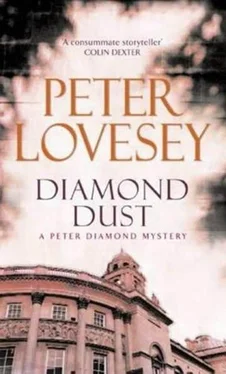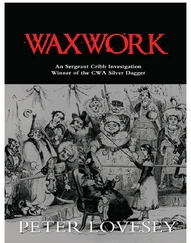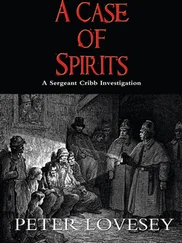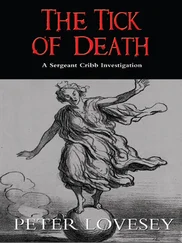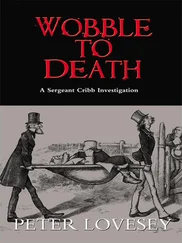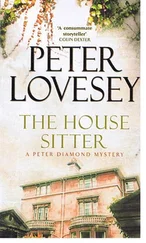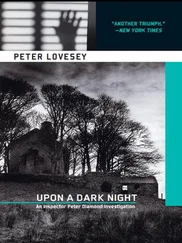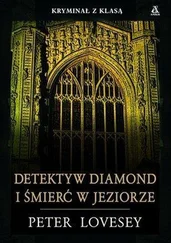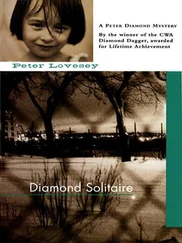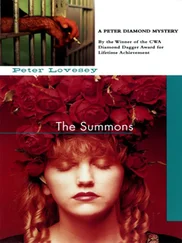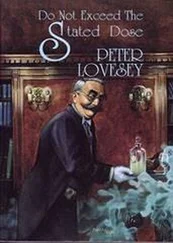'Maybe.'
Another minute went by.
One of the cops looked at his watch. 'This isn't looking good.' He got up and went to the window, returned and sat with the others. 'What's in that?'
'In what?'
'The suitcase.'
Harry eyed the case he had personally filled with phone directories and lugged here. He frowned. 'It's just for show, I guess.'
'What's in it?'
'You've got me there.'
'You don't know?'
'I told you.'
The less talkative of the cops suddenly said, 'Jim.'
'What?'
'These people are bombers.'
'Jesus,' Jim said. The penny had finally dropped.
Harry stood up. 'You could be right. This damned case could be packed with explosives. They can detonate by remote control. We'd better get outta here.'
Jim was first through the door, followed closely by Harry. The corridor looked empty, but this was deceptive. Jim yelled, 'There could be a bomb in there. Clear the floor!' And immediately the doors of two other suites opened and men carrying sub-machine-guns came out. 'It's off,' Jim said. 'Everybody out.'
Harry had already picked his route. Instead of using the lift, which was open, he turned left and took the stairs. Before he was down the first flight he'd ripped off the moustache and pocketed the horn-rimmed glasses. On the third floor he emerged alone. The alarm system had just been switched on. Walking steadily, but without suspicious haste, he made his way along the corridors to the stairs on the opposite side of the building. He descended to ground level and strolled into the street and down the tube.
AND STILL THE KILLER WALKS FREE
Six months ago this week the wife of a Detective Superintendent was gunned down and murdered in Bath's elegant Royal Victoria Park, within view of the world-famous Royal Crescent. The most intensive investigation ever mounted in the city has so far failed to find the killer of Stephanie Diamond. In this special report, we examine the conduct of the inquiry and get the views of two of the principal men involved: Detective Chief Inspector Curtis McGarvie, who leads the investigation, and Detective Superintendent Peter Diamond, the victim's husband.
On Shrove Tuesday morning, last February 23rd, at 8.15, Peter Diamond kissed his wife Stephanie goodbye and drove to work as usual. It was the day in the week when Mrs Diamond caught up with household chores and shopping. On other days she worked as a volunteer in the Oxfam shop. That morning she was her usual cheerful self and showed no sign of stress. She didn't mention any arrangement to meet anyone, or visit the park, although a note was later found in her diary apparently fixing a meeting with someone she called 'T'. About 10.15, two shots were heard close to the Charlotte Street Car Park. An unemployed man walking his dog on the far side of the park heard the shots and presently found a woman's body in Crescent Gardens, beside the Victorian bandstand. Two bullets had been fired into her head at point-blank range.
Peter Diamond, the head of Bath's murder squad, arrived at the scene within a short time of the shooting, before anyone had identified the victim. One of several distressing features of this case is that he himself recognised the dead woman as his own wife. In spite of repeated appeals for witnesses, nobody appears to have seen the shooting. Police believe the gunman must have escaped through the car park, and video footage from the security cameras has been examined without any helpful result. A number of reports of drivers leaving around the time of the shooting have so far proved unhelpful. Eleven detectives and five civilians are working full-time on the case, which is believed to have cost three-quarters of a million pounds already.
The SIO (Senior Investigating Officer), DCI McGarvie, has appeared on Crimewatch and Police Five appealing to the public for assistance. A reconstruction was staged at the scene of the crime with a policewoman dressed in similar clothes to the victim. 'There was a huge response from the television audience,' the Chief Inspector told our reporter, 'and we fed every piece of information into our database, but we still lack the crucial evidence that will identify the killer.' McGarvie is convinced there are people who know someone who acted suspiciously at the time of the murder, and he urges them to get in touch as soon as possible.
THEORIES
Sitting in the incident room surrounded by photos of the victim, in life and in death, and a computer-generated map of the crime scene, DCI McGarvie outlined the main theories his team have so far produced:
1. The killer acted under instructions from someone in the underworld with a grudge against Det. Supt. Diamond. As a murder squad detective in the Metropolitan Police and Bath CID, Peter Diamond has been responsible for many convictions over a twenty-three-year career. The problem with this theory is that a criminal bent on revenge is more likely to attack the officer who put him away than his wife.
2. The killer was hired by the wife or girlfriend of a convicted man. It is felt that an embittered woman might have ordered the killing in revenge for the loss of her own partner.
3. The wife or girlfriend of a convicted man fired the fatal shots herself as an act of revenge. Such a woman with underworld connections might have access to a firearm, though shootings by women are rare.
4. Stephanie Diamond, an attractive woman looking some years younger than her age of 43, was shot by some obsessive person or stalker, a 'loner' who believed she stood in the way of their fantasies. Stalkers have been known to 'punish' the women they idolise for what they see as infidelity.
5. The 'T' mentioned in her diary was trying to blackmail Mrs Diamond about some secret, or supposed secret, in her past and killed her in frustration when she refused to pay up.
6. The killing was a mugging that went wrong. The killer drew a gun. Mrs Diamond resisted, or even fought back. The first shot was accidental and the second was fired in panic.
The difficulty with theories 4, 5 and 6 is that the shooting has the hallmarks of a contract killing. The murderer timed the shooting at an hour when Victoria Park was quiet. The scene of the crime was close to the Charlotte Street Car Park, enabling the killer to get away rapidly to a vehicle, if the police theories are correct. A.38 revolver was used. 'Two shots to the head are characteristic of a professional gunman,' says DCI McGarvie. 'People have been known to survive a single shot to the head. The second bullet makes certain.'
CONFIDENT
Curtis McGarvie remains confident of an arrest. 'This is by far the biggest test of my career in CID,' he admits, 'and it's taking longer than I expected. I thought there would be more witnesses, considering where the shooting took place. We've been unlucky there, unless someone else can be persuaded to come forward. We've done reconstructions, and we know the killer took at least ten seconds to leave the scene and return to the car park. We are pretty sure they used a car. Somebody, surely, heard the shots and saw the gunman return quickly to the car park and drive off.' He is conscious that the costs of this case are mounting and there is already pressure to scale down the investigation. 'Up to now, I've had unqualified support from the Police Authority. A long-running case is automatically reviewed by the top brass. We've had two such reviews, and my leadership hasn't been faulted. But I can't expect to carry on indefinitely at this pitch when we're up against manpower shortages and budgets.'
Detectives speak of unsolved cases as 'stickers' and hate to have them haunting their careers. The murder of a police colleague's wife is particularly hard to consign to a file of unsolved cases. 'Peter Diamond is a man highly respected by everyone who knows him,' says McGarvie. 'No one here is going to give up while there is the faintest chance of progress. He's in a difficult position, because even though he is a fine detective with substantial experience it wouldn't be right or proper for him to investigate the murder of his own wife. We owe it to him to slog away as hard as he would to find the killer.'
Читать дальше
